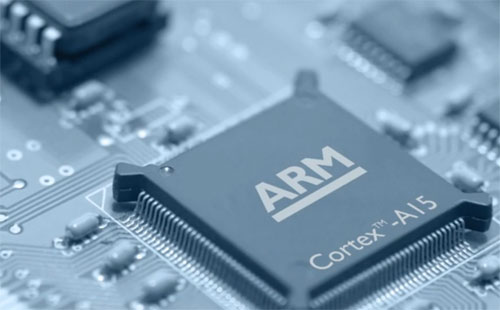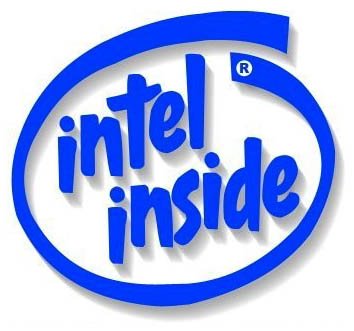Intel vs ARM the battle commences
As mobile devices become ever more powerful they are starting to encroach on the domain of traditional PCs. While the smartphone and tablet markets are growing rapidly (72% in 2010), PC market growth is slowing (forcast as less than 10% growth 2011-2015).
This presents multiple problems for Intel (supplier of 90% PC processors):
- The growth in their major market is slowing.
- The rapidly growing smartphone/tablet market is currently dominated (95%) by CPUs licensed from ARM.
- Intel is late to the party. They will launch their first competitive smartphone CPU in Q3 2011.
- The next generation of ARM based CPUs will encroach on Intel’s market of PCs and servers, by offering cheaper, low-power parts.
- Intel is a single (although admittedly massive) company up against an ecosystem of ARM partners including most of the major silicon vendors - Samsung, TI, NVidia, Qualcomm, ST-Ericsson, etc.

There’s a fascinating article at Arstechnica which is based on an interview with NVIDIA CEO Jen-Hsun Huang whose company is placing a large bet on ARM. The article concludes that Intel will end up like other previously successful CPU architectures - Alpha, MIPS, SPARC, PowerPC - marginalised at the high-end:
if the ARM ecosystem can simultaneously keep the cost of ARM chips much lower than that of x86 chips, then ARM could do to x86 what x86 did to Alpha, MIPS, SPARC, PowerPC, and the other RISC workstation architectures. Intel used its process strength to get close enough to RISC workstation and server performance that the PC’s status as a low-cost commodity machine gave the PC an edge. We all know how the story played out: the high-end RISC vendors were marginalized, as the lower volumes on their now-boutique chips kept their prices up; meanwhile, Intel relentlessly narrowed the performance gap and moved the PC into new markets because it was dramatically cheaper and almost as good.
Intel’s predicament reminds me of the central idea in Innovator’s Dilemma: When New Technologies Cause Great Firms to Fail; namely that large, seemingly unassailable incumbents, find it almost impossible to compete with new entrants when the technology or business model shifts radically away from their established practice. Using the language of Innovator’s Dilemma; we’ve reached an inflection point where the new entrant (ARM based system-on-chips) are good enough and offer significant benefits (cost, integration and power-consumption) to steal significant market share from the incumbent (Intel).
For a long time Intel ignored ARM. ARM’s business isn’t remotely as profitable as Intel’s. Until recently, the phone and PC market were completely distinct. ARM didn’t appear to provide any kind of threat to Intel. In fact Intel, for a while, built ARM CPUs through it’s acquisition of Digital in the form of StrongArm XScale before selling the business to Marvell. The unit simply didn’t generate the kind of profits Intel was used to from it’s x86 processor division. This allowed ARM to grow, perfect it’s technologies and build the formidable ARM ecosystem under Intel’s nose. Since Intel has woken-up to the threat poised by the ARM ecosystem they have struggled to compete - they still (early 2011) didn’t have a CPU that is remotely as power-efficient as ARM based system-on-chips.
In 2011 we will see Intel and ARM go head-to-head. Intel will have a part which is power-competitive with ARM and ARM partners will be releasing quad-core Cortex-A9 CPUs providing comparable performance to Intel.

David vs Goliath OR Gullivar vs Lilliputians
If this were a straight battle between Intel and ARM you’d expect a biblical twist with Goliath thrashing a helpless David. However ARM’s ecosystem has changed the terms of engagement, so it’s more like a battle between Gulliver and the Lilliputians. Will the giant Intel be able to fend-off attacks from all sides launched by it’s diminutive, nimble competitors; the massed army of ARM licensees?
Intel has traditionally enjoyed high margins. As the ARM ecosystem begins to move into Intel’s markets, Intel will see it’s profit margins eroded as it’s forced to compete on price. Will Intel be able to, or want to, transform itself into a higher volume, lower profit company in-order to engage in the large mobile devices market? The Arstechnica article instead sees Intel retreating to a smaller high-margin, high-performance niche. This retreat to the profitable hills is well documented in the anecdotes in Innovator’s Dilemma. Remember what happened to the incumbents as the technology changed from mainframe to mini-computer followed by mini-computer to microcomputer and the latest disruption; discrete microprocessor to system-on-chip.
However Intel doesn’t look ready to seed this market to ARM and it’s partners. Through acquisitions such as it’s recent purchase of Infineon it’s aiming to build an x86 based system-on-chip (SoC) which, through reference designs, smartphone vendors can use to rapidly develop new handsets.
Intel’s SoC will enter a crowded market of ARM partners SoCs. Will Intel simply be one of many SoC vendors or will Intel manage to design parts so compelling that it will cream off the majority of the market and leave the pickings for the others? It’s a battle royal as it’s effectively Intel vs the rest of the industry.
Intel has a few things in it’s favour:
- Intel leads the world in the processes it uses within it’s silicon fabs giving Intel approximately a 12month lead over it’s competitors. Intel’s initial smartphone offering will use 32nm geometry compared with 40nm or 45nm used by most ARM SoC vendors. The smaller geometry provides a power-consumption and cost advantage.
- Intel can out-spend it’s competitors on R&D over a sustained period or use it’s massive cash reserves to effectively cross-subsidize it’s SoC offerings. Intel can also afford to pay massive fines for it’s anticompetitive behaviour.
Intel is also experimenting with alternative business models at the fringes:
- Selling fab capacity to 3rd parties.
- Licensing x86 cores to 3rd parties.
It’s going to be fascinating to see how this story evolves. In one future, assuming ARM significantly erodes Intel’s market share, Intel could demerge it’s manufacturing capacity from it’s CPU design capability. One company would run it’s market leading silicon fabs and provide manufacturing capability to all comers, including the ARM ecosystem, while the other company would design high-end x86 based CPUs. Alternatively Intel could crush all comers and we’ll all end up with “Intel Inside” stickers on our phones. Perhaps ARM will be purchased by one of it’s partners, resulting in a contracting ARM ecosystem.
Whatever the final outcome competition is going to keep prices down
Update: March 21st: Intel has announced that Anand Chandrasekher, head of Ultramobility computing at Intel is leaving, ‘to pursue other interests’. The terse nature of the press release and the unexpected and sudden announcement could lead one to speculate that all isn’t going as well as hoped for at Intel’s unit tasked to compete with ARM.
Other coverage of the news: